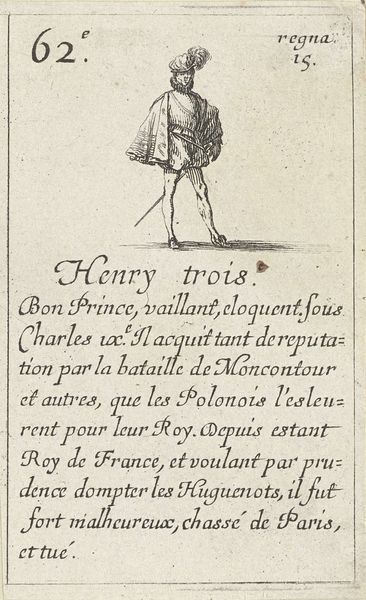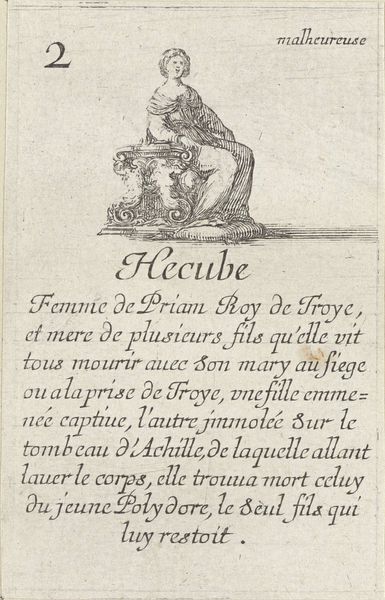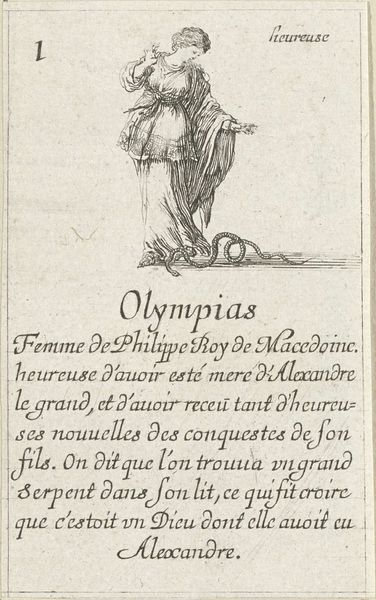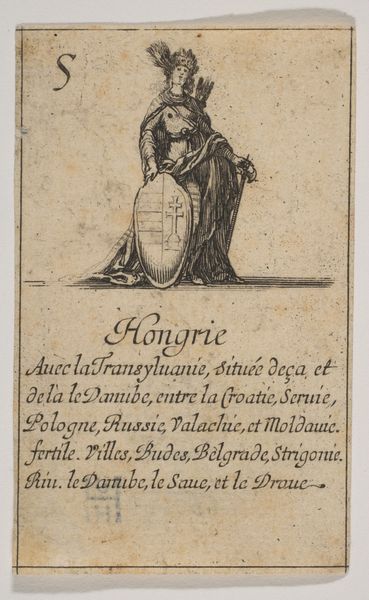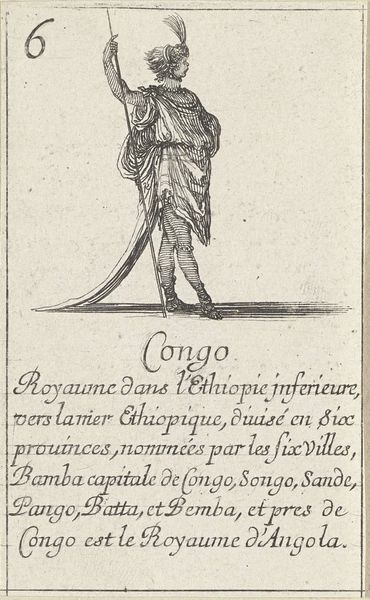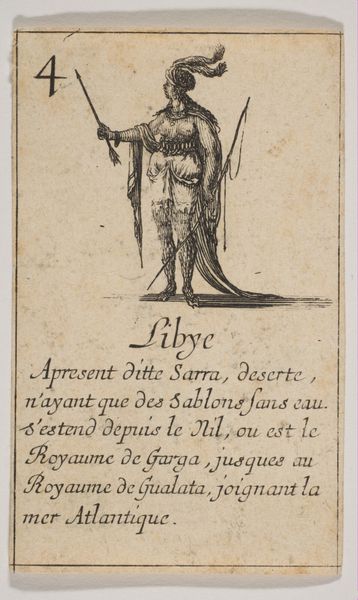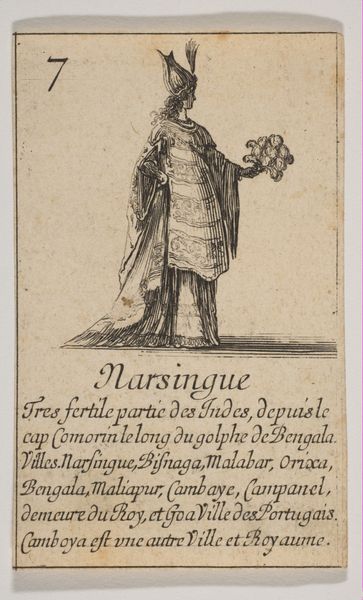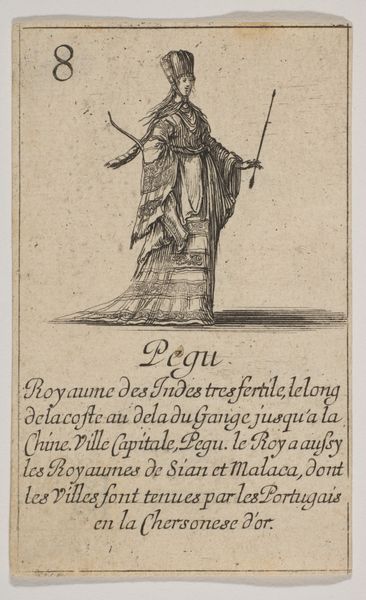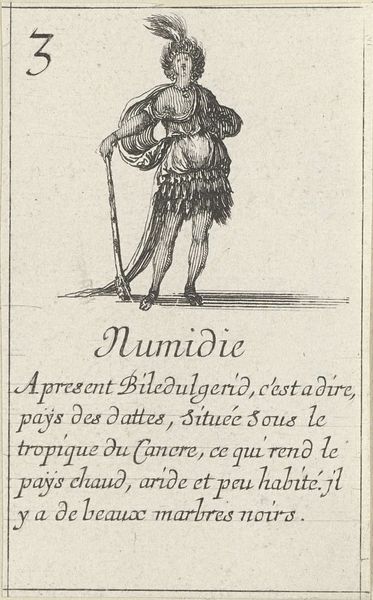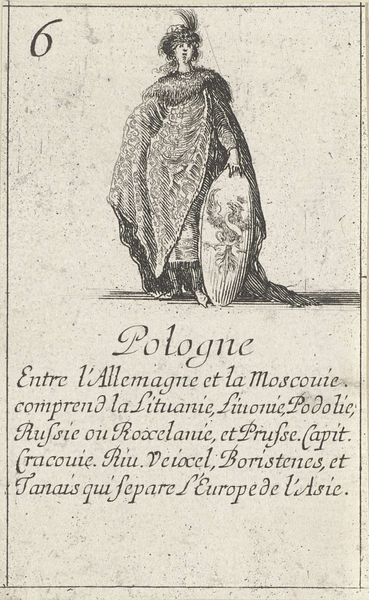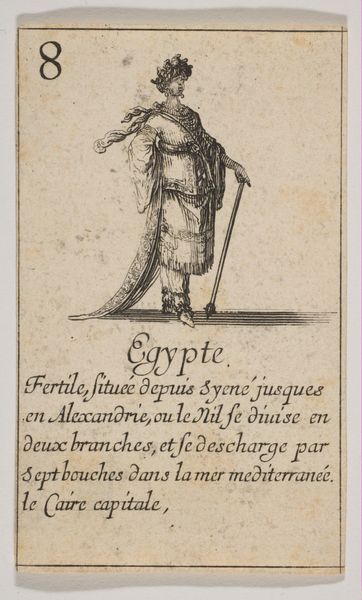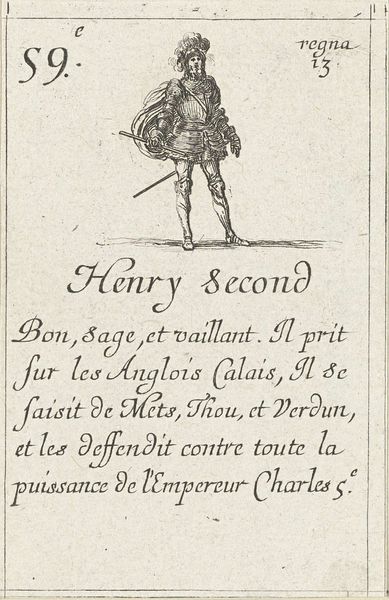
graphic-art, print, etching
#
portrait
#
graphic-art
#
baroque
# print
#
etching
#
history-painting
Dimensions: height 90 mm, width 54 mm
Copyright: Rijks Museum: Open Domain
Editor: This etching, titled "Hendrik I", was created by Stefano della Bella sometime between 1620 and 1664. It's fascinating how much detail he packed into such a small graphic print. What elements of the composition stand out to you? Curator: Immediately, I'm drawn to the figure's posture and how it interacts with the overall composition. Notice the dynamic, almost theatrical stance; his slightly turned body and the angle of the staff create a diagonal axis that contrasts with the verticality of the inscription below. This interplay generates a visual tension. What effect does this achieve? Editor: I suppose the angle of his body lends energy to an otherwise static figure, drawing the eye upward? The baroque details on his armor add an extra element to that movement. Curator: Precisely. Furthermore, observe the artist's manipulation of line. Della Bella uses varying densities of hatching to create the illusion of depth and texture, especially in the armor and drapery. The contrast between the meticulously rendered figure and the relatively sparse background emphasizes his presence and dominance within the frame. Editor: That makes sense. Now that you point it out, I see how carefully the density of lines is varied across his form. It is quite convincing. The whole thing is extremely delicate. What would you say that delicacy brings to this print? Curator: Its refined nature and diminutive scale emphasize the control Della Bella exhibits through his etching technique. How can we read into the work via an almost mathematical control of structure and texture? Editor: Well, the amount of effort that must have been involved does reinforce the king's own presence in this format. He may be one tiny element within a larger composition, but he dominates it. I definitely noticed details in a way I wouldn't have otherwise. Thank you. Curator: Indeed, the emphasis on line and form certainly enriches our perception. Examining the construction and form offers insights into its intrinsic aesthetic value beyond just what is shown.
Comments
No comments
Be the first to comment and join the conversation on the ultimate creative platform.
